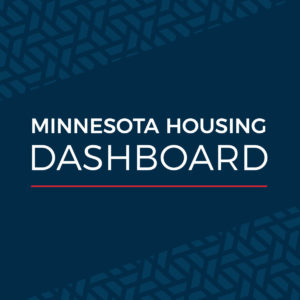Over the past week, the Minnesota Legislature and Governor Walz enacted the “Construction Worker Wage Protections” statute. This new law will create significant impacts across the housing industry. Given this, we have consulted with our legal counsel and are now sharing more details with you about how the new law came about, what we know today, and our efforts to lead the industry response into the future.
As we have shared since the bill’s introduction in February, Housing First Minnesota has led the housing industry’s opposition to this unnecessary and poorly constructed law change. Our professional staff, attorneys, and hundreds of industry members engaged in a broad response to halt and improve this initiative. This included expert testimony, countless member communications, meetings, amendment proposals, and coalition building across the entirety of the construction industry.
In the end, the proponents of this bill, legislative leaders, and Governor Walz elected to ignore feedback and perspective from the construction industry. The labor organization proponents of this bill are exempted from the reach of the legislation for which they advocated – leaving the rest of the residential and commercial construction industries to absorb the substantial costs imposed on contractors. This will inevitably hurt contractors of every size, increase costs, and decrease housing affordability.
Our goal now shifts to prepare our industry for the new change, while industry legal experts study the possibility of challenging this legislation given its obvious flaws and fundamental unfairness.
To assist members in the near term, the Housing First legal team has answered key questions relating to the new law.
Issue Background
What does the new law do? The new law provides that a contractor “has assumed a subcontractor’s liability . . . for the full payment of wages, gratuities, and overtime compensation.” Put another way, if a subcontractor fails to pay its employees, the general contractor is liable to those employees and subject to prosecution by the Department of Labor and Industry and direct claims by the subcontractor’s employees including payment of attorneys’ fees and costs incurred by the employees.
Which homebuilding and trade partners are impacted by this new law? The Statute applies to all “Construction contracts,” even those that are oral, for the “construction, reconstruction, erection, alteration, remodeling, repairing, maintenance, moving, or demolition of any building, structure, or improvement, or relating to the excavation of or the development or improvement to land.”
Who is exempt from this law? The Statute does not apply to remodeling contracts for residential and home improvement projects entered into with the home’s owner. Also exempt are home improvement contracts for one or two-family dwellings “except where such contract or contracts results in the construction of more than ten, one or two family owner/occupied dwellings in one project site annually.” Union contractors are exempted from the new wage law, provided that they have a grievance process for wage-related issues.
When does it go into effect? The law is effective August 1, 2023, for all contracts or agreements entered into, renewed, modified, or amended on or after that date.
Other Important Questions
How does the ‘ten-unit’ exception work? Unfortunately, it isn’t very clear. The ten-unit annual exception is ambiguous about what is a “project site.” For example, is a project site a single platted development, and thus each plat is a separate “project site”? What if the project is part of a larger development and the contractor is merely a builder in several plats, does the exception apply?
The Statute also fails to define what “annually” means. That is, if a contractor constructs 12 single-family homes between June 30, 2024, and July 1, 2025, but does not construct 10 homes in either 2024 or 2025 on a calendar basis, does the exception apply? The Statute does not answer these questions.
Can construction contracts be updated to shift liability or obtain indemnity from subcontractors? The Statute specifically provides that the contractor has assumed all liability of the subcontractor for making wage payments. See, Minn. Stat. § 181.165, subd. 2(a). It also prohibits the contractor from entering into any agreement whereby the contractor could be indemnified by either the employee or the subcontractor for liability under the Statute. The contractor’s only remedy if a subcontractor fails to pay its employees, is the statute permits the contractor to bring a legal claim against the subcontractor. See, Minn. Stat. § 181.165, subd. 2(b). This obviously creates an incentive for subcontractors to be less diligent in the payment of their employees as it places a burden on the contractors.
How can a contractor avoid liability? The contractor’s only way to avoid liability is to engage in the expensive and time-consuming process of auditing the payroll records of the subcontractor. See, Minn. Stat. § 181.165, subd. 4. However, the Statute does not address a situation where the subcontractor provides either incomplete or false records. Thus, even if a contractor incurs the expense of auditing its subcontractor, and the payroll records appear to be in order, the contractor remains liable notwithstanding its efforts to satisfy the requirements of the Statute.
Does full payment of a subcontractor remove wage liability? Even if a contractor fully pays a subcontractor, it can still be liable if the subcontractor fails to pay its employees. In this situation, the contractor would be required to “pay twice” to cover employee wages that the subcontractor did not pay. The contractor’s only remedy would be against a likely insolvent subcontractor.
What Contractors Can Do In Response
- Revise Subcontractor Agreements. While contractors cannot shift liability or obtain indemnity from subcontractors for failure to follow the Statute, their contracts with subcontractors should be modified to require subcontractors to provide proof of payment of subcontractor employees before funds are released.
- Subcontractor Proof of Financial Strength. Subcontractors should also be required to provide information concerning their financial strength, cash reserves, and other indicia confirming that they can meet their payroll obligations.
- All Information Should Be Requested. All payroll and other financial information described in the Statute should be fully requested. See, Minn. Stat. § 181.165, subd. 4. Subcontractors should also be required to give weekly evidence of payment of their employees and solvency.
- Bonding. Contractors can require subcontractors to bond over their liabilities.
- Strategic Number of Homes Constructed. Small or medium-sized builders should consider limiting the number of homes on any one project site (as discussed, this term is not defined) to ten or fewer homes in a twelve-month period.
- Require Third-Party Payroll Services. Contracts with subcontractors could require reputable third-party payroll services to be used by subcontractors, and contractors or owners could pay those services directly to ensure payment is made to subcontractors. This is a new approach that would need to be more fully explored with third-party vendors and present significant logistical challenges but could ensure that subcontractor employees are paid, limiting exposure for general contractors.
- Seek Legal Advice. Each industry member should have their contracts and subcontractor relationships reviewed by their individual legal counsel.
Housing First Minnesota’s Next Steps
Housing First will have educational opportunities for members to learn more about this statute in the coming weeks. As mentioned, industry legal experts are exploring options to challenge the statute.
Join us at our next virtual Membership Town Hall on June 7 to learn more hear more about this law and others and what they mean for the industry.

















